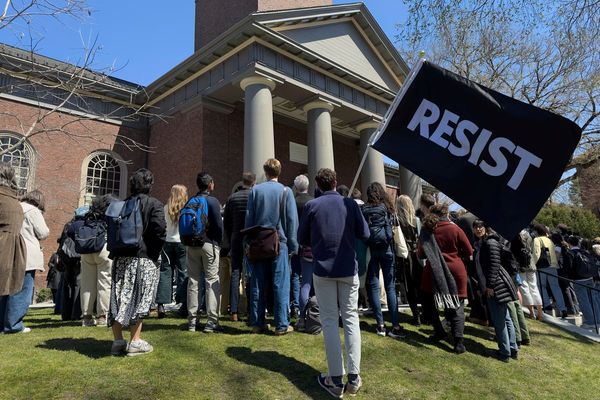
With reports of widespread business uncertainty and confusion leading to an unanticipated 10-year record plunge in January dealmaking, air is rushing out of business’ balloon of early euphoria for the Trump agenda. President Trump’s language of schoolyard bullying and vindictiveness toward our closest allies undermines those moves where his lieutenants at the Treasury and Commerce Departments may see a strategic logic.
However, in some cases, America’s closest allies are used as obvious but quiet pass-through shills for rivals and adversaries, such as China and Russa, to offload products at market-distorting prices, as is not uncommon with steel and aluminum. Such actions are taken solely to enrich foreign oligarchs and corrupt middlemen smugglers while hurting American industry.
While in other cases, the tariff tantrums seem to only erode trust, slowly dismantling a centuries-old foundation that was carefully constructed by Republicans and Democrats. America has been here before, however. The disparaging “banana republic” term assigned to Central American countries in the early 1900s was the creation of U.S. government interventions to undermine legitimate foreign governments for the benefit of U.S. businesses such as Chiquita and Dole. Significant bipartisan actions were required to restore the “good neighbor” policies we know today and correct the destructive “ugly American” reputation.
Last week, before Trump cratered or blinked, as the Wall Street Journal proclaimed, we began to see those business leaders who were enthusiastic about the president’s economic agenda shift to near universal alarm because of his plans to unilaterally impose 25% tariffs on imports from Mexico and Canada, the U.S.’s two largest trading partners. Business groups from the National Association of Manufacturers to the U.S. Chamber of Commerce to the United Steelworkers have issued statements of fierce opposition to Trump’s tariff bluster.
The whipsaw of tariffs—some potentially beneficial and others less so—have left CEOs and investors temporarily frozen, anxiously waiting to see what’s next. Unsure of whether Trump will pursue a tariff regime that will resolve market distortions or destroy a global order that has long benefited the U.S.
Repairing market failures?
While Canada and Mexico are the largest exporters of steel and aluminum to the U.S., over the past decade, Canada has become a distant first. In 2019, Canada exported over $5 billion of steel to the U.S., an amount that had remained relatively flat for the prior decade. By 2024, Canada was exporting more than $11 billion of steel to the U.S., despite prices falling to a level even lower than those of 2019. Much of that growth is from the flood of imports from China and other foreign nations.
Canada saw a large uptick in volume of steel and aluminum imports from China between 2019 and 2022, nearly doubling before a moderate decline in 2023, but levels have remained elevated compared to 2019. A similar trend emerged in Canadian imports of steel and aluminum from South Korea, Mexico, Turkey, and Vietnam, all top markets for Chinese steel exports.
Then, of course, Russia continues to evade sanctions by dumping steel and aluminum through neutral countries only so those materials can be repackaged, relabeled, and re-exported.
Collectively, Russia, China, and their illegal third-party exporters—which not only export steel to Canada but also see Canada pass through their cheaper foreign steel through various product forms—have seen their share of trade with Canada grow to the detriment of the U.S. Mexico, too, has received its share of criticism for not adequately protecting against the dumping of Chinese steel, much to their own benefit.
Or eroding global trust?
Contrary to free market mythology, business leaders are not always averse to tariffs—when they are used strategically and selectively. In fact, when we surveyed top CEOs at a recent Yale CEO Caucus, 56% of them agreed that we need to protect vital U.S. industries from unfair foreign competition through tariffs—but they distinguish between protecting against genuinely unfair foreign competition vs. all-tariffs-all-the-time.
Trump does not even begin to disguise there is no economic rationale for his tariff tantrum—threatening to impose the tariffs under his authority per the International Emergency Economic Powers Act in response to illegal migration and fentanyl drug smuggling—even though Canada is responsible for less than .1% of all fentanyl entering the U.S.
But the catastrophic economic consequences of universal 25% tariffs on all imports from Canada and Mexico, without even a single exemption, are hard to sugarcoat. These costs will be borne by American companies and passed on to American consumers, increasing the costs of everything from cars to guacamole. That does not even begin to consider the impact of retaliatory tariffs under consideration by Canada and Mexico, targeting major American exports ranging from farm products to orange juice to bourbon.
The devastating economic consequences of tariffs gone amok have already been proven under the first Trump administration. While certain Trump tariffs from his first term were effective and were in fact not only retained but strengthened by the Biden administration, such as those targeting Chinese technology transfer, other tariffs were hugely ineffectual and self-damaging. For example, Trump’s EU trade threats resulted in the loss of hundreds of billions in U.S. agricultural exports from mid-2018 through the end of 2019, which necessitated government bailouts of farmers.
Furthermore, Trump tariffs have been demonstrated to have a deleterious impact on not only business confidence but capital expenditures and business investment, with a significant inverse relationship between capex and tariffs.
In a recent 60 Minutes interview, Robert Lighthizer, who served as Trump’s chief trade negotiator in the president’s first term and now acts as an unofficial advisor to the new administration, justified the president’s latest round of tariffs on Chinese goods as a response to an autocratic nation that is “an existential threat to the United States…a very, very competent adversary.”
When it comes to China, even the strongest advocates of free trade are willing to overlook their strict ideological beliefs in the name of national security. “[China has] been waging an economic war against the United States…stealing U.S. trade secrets,” as Lighthizer points out. Indeed, U.S. sanctions on China have become so politically popular that they are one of the few issues receiving widespread bipartisan support in Congress.
And despite commentators’ doubts about their effectiveness, sanctions have contributed to the sustained degradation of the Chinese economy. While China has found some limited loopholes to sanctions—and may very well find more—even the additional cost and time burdens placed on the Chinese Communist Party (CCP) to work around such sanctions offer an invaluable advantage to the U.S. and its allies in areas ranging from the AI/tech race to economic statecraft.
Moreover, Trump, ever the skilled negotiator and pragmatist, is well positioned to use the raft of challenges facing China’s President Xi Jinping and the resilience of America’s economy to advance and protect U.S. interests. Trump has shown, many times over, an innate ability to quickly identify and exploit a counterpart’s weakness for his own gain. To the surprise of many, Trump has already used a similar tactic by delaying the push to end Russia’s war against Ukraine—as he promised during the campaign—after recognizing the precarious situation Russian President Vladimir Putin finds himself.
That said, when a 10-percentage point incremental tariff on goods from a country often characterized as an “existential threat to the United States” is the lesser burden among the recipients in a planned tariff regime, and the greater burden is placed on long-time friends of the U.S., critics have a right to question whether more aggressively targeting allies is the most effective path forward diplomatically.
Despite news of a recent pause in the tariffs plan directed at Mexico and Canada, the tariffs on our southern and northern neighbors threaten to weaken not only the economies of two of our most important allies but also the alliances and partnerships so carefully developed over decades by both Republican and Democratic presidential administrations. Furthermore, other U.S. allies and partners are now entitled to question the reliability of American commitments, and U.S. rivals now have tangible evidence of the U.S. not playing by their own global rules or adhering to the international order that they themselves established. Ironically, China has filed a lawsuit against the U.S. at the World Trade Organization to contest latest round of tariffs, citing a “blatant act of unilateralism and trade protectionism” and positioning the Asian nation on the proverbial “high ground”—at least for the time being.
Even after the quick concessions by Mexican President Claudia Sheinbaum and Canadian Prime Minister Justin Trudeau, allied and non-allied countries are more likely to reconsider their neutrality or outright opposition towards China, which is tactfully pursuing a more friendly form of economic diplomacy. It should not be lost that, less than three months ago, much of the Western world anxiously watched as Xi attended the ribbon cutting of a Chinese-funded $1.3 billion mega-port in Chancay, Peru, providing the CCP another point of water access to America’s backyard.
Leaders in China have taken notice of the opportunity to outmaneuver Trump. At Davos, Chinese Vice Premier Ding Xuexiang insisted to a room of business executives that the world’s economic leaders should “lead by example,” not engage in “zero-sum” aggressor tactics. As they did with China, allies in Europe have begun to question whether the risk-reward tradeoff of close trade ties with the U.S. is worth it, and specifically whether it may be time to diversify supply chains away from brazenly self-interested American political short-termism. The consequences are real for American workers, as European reshoring potentially threatens some of the 16 million jobs supported by EU-U.S. trade.
The road ahead is unclear for not only China and (yes, still) Canada and Mexico, but also the U.S. The legality of Trump’s sweeping tariffs through the International Emergency Economic Powers Act has been rightly called into question by experts. The spirit of the president’s national emergency declaration, based upon “the major threat of illegal aliens and deadly drugs killing our Citizens, including fentanyl,” is well-intentioned, but such sweeping economic sanctions are as precise as they are legal. Instead, tariffs should be legitimately implemented under more specific conditions and for more specific purposes, such as those specified in Sections 201 and 301 of the Trade Act of 1974, and Section 232 of the Trade Expansion Act of 1962.
Now that he has flexed American muscle, Trump has quickly shifted to negotiation mode. Ideally, his early agreement with Sheinbaum results in a longer-term partnership that makes significant progress in limiting the inflow of fentanyl and illegal migrants from Mexico. Unfortunately, Canada may have a more difficult time making progress due to the amount of migrants or drugs being virtually zero and a tense relationship between Trudeau and Trump.
Financial markets are cautiously monitoring the harmful economic and diplomatic effects of Trump’s unabashed tariffs, in addition to whipsaw policymaking that often plagued so many business leaders and investors during the president’s first administration. The negative market sentiment is somewhat surprising given Trump’s persistent promises to pursue such a strategy on the campaign trail. Ever sensitive to market movements, Trump will surely be watching how investors digest his actions over the weeks and ahead.
Jeffrey Sonnenfeld is the Lester Crown Professor in Management Practice and Senior Associate Dean at Yale School of Management. Stephen Henriques is a senior research fellow at the Yale Chief Executive Leadership Institute and a former McKinsey & Co. consultant. Steven Tian is the director of research at the Yale Chief Executive Leadership Institute.
The opinions expressed in Fortune.com commentary pieces are solely the views of their authors and do not necessarily reflect the opinions and beliefs of Fortune.
Read more:
- Tariffs won’t make America great again: Export-Import Bank's former chairman and president
- The best psych-out artists know how to mess with your mind, but Trump’s push for tariffs shows how this strategy can backfire
- Trump tariffs: Stealing from the China playbook—to boost car making in America







